Tiep M. Hoang
Space-Terrestrial Cooperation Over Spatially Correlated Channels Relying on Imperfect Channel Estimates: Uplink Performance Analysis and Optimization
Dec 21, 2022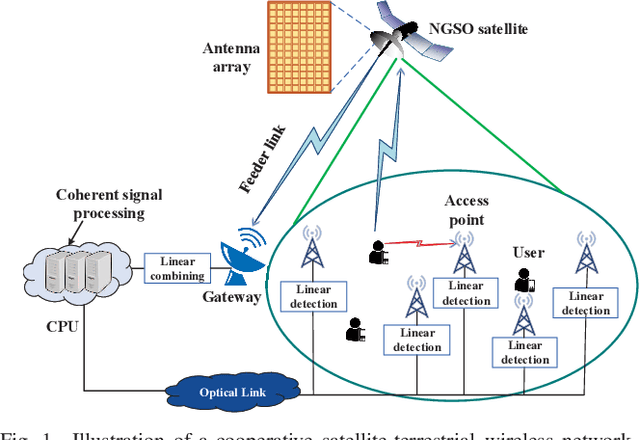


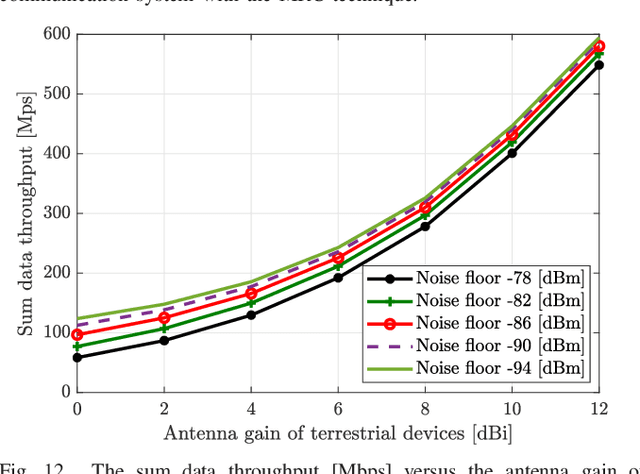
Abstract:A whole suite of innovative technologies and architectures have emerged in response to the rapid growth of wireless traffic. This paper studies an integrated network design that boosts system capacity through cooperation between wireless access points (APs) and a satellite for enhancing the network's spectral efficiency. We first mathematically derive an achievable throughput expression for the uplink (UL) data transmission over spatially correlated Rician channels. Our generic achievable throughput expression is applicable for arbitrary received signal detection techniques under realistic imperfect channel estimates. A closed-form expression is then obtained for the ergodic UL data throughput when maximum ratio combining is utilized for detecting the desired signals. As for our resource allocation contributions, we formulate the max-min fairness and total transmit power optimization problems relying on the channel statistics for performing power allocation. The solution of each optimization problem is derived in form of a low-complexity iterative design, in which each data power variable is updated relying on a closed-form expression. Our integrated hybrid network concept allows users to be served that may not otherwise be accommodated due to the excessive data demands. The algorithms proposed to allow us to address the congestion issues appearing when at least one user is served at a rate below the target. The mathematical analysis is also illustrated with the aid of our numerical results that show the added benefits of considering the space links in terms of improving the ergodic data throughput. Furthermore, the proposed algorithms smoothly circumvent any potential congestion, especially in face of high rate requirements and weak channel conditions.
Power Allocation for Space-Terrestrial Cooperation Systems with Statistical CSI
Sep 03, 2022

Abstract:This paper studies an integrated network design that boosts system capacity through cooperation between wireless access points (APs) and a satellite. By coherently combing the signals received by the central processing unit from the users through the space and terrestrial links, we mathematically derive an achievable throughput expression for the uplink (UL) data transmission over spatially correlated Rician channels. A closed-form expression is obtained when maximum ratio combining is employed to detect the desired signals. We formulate the max-min fairness and total transmit power optimization problems relying on the channel statistics to perform power allocation. The solution of each optimization problem is derived in form of a low-complexity iterative design, in which each data power variable is updated based on a closed-form expression. The mathematical analysis is validated with numerical results showing the added benefits of considering a satellite link in terms of improving the ergodic data throughput.
Deep Learning Based Successive Interference Cancellation for the Non-Orthogonal Downlink
Jul 29, 2022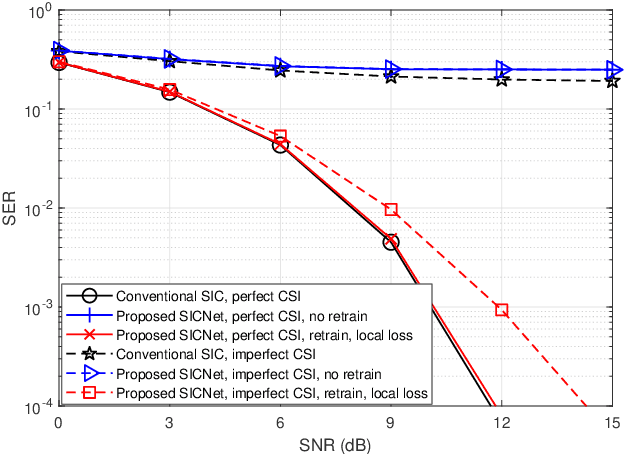
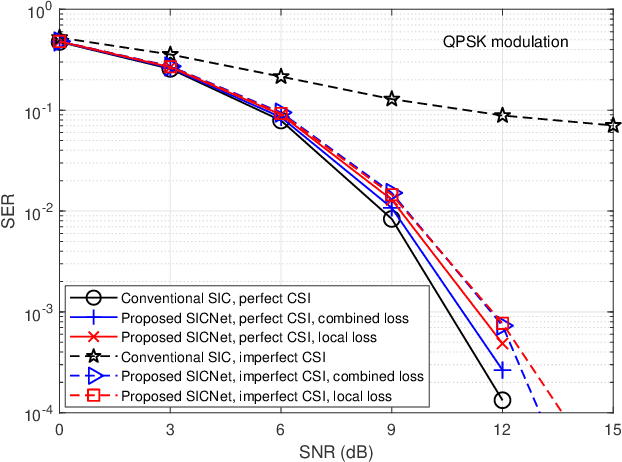
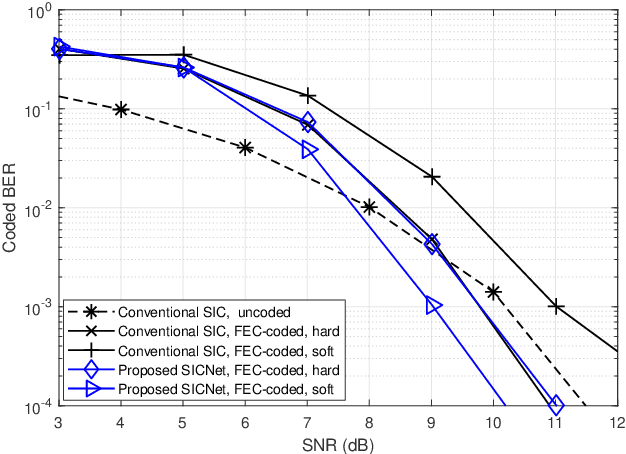
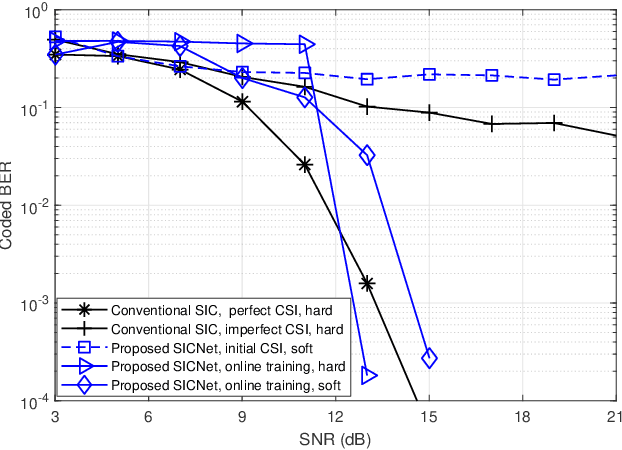
Abstract:Non-orthogonal communications are expected to play a key role in future wireless systems. In downlink transmissions, the data symbols are broadcast from a base station to different users, which are superimposed with different power to facilitate high-integrity detection using successive interference cancellation (SIC). However, SIC requires accurate knowledge of both the channel model and channel state information (CSI), which may be difficult to acquire. We propose a deep learningaided SIC detector termed SICNet, which replaces the interference cancellation blocks of SIC by deep neural networks (DNNs). Explicitly, SICNet jointly trains its internal DNN-aided blocks for inferring the soft information representing the interfering symbols in a data-driven fashion, rather than using hard-decision decoders as in classical SIC. As a result, SICNet reliably detects the superimposed symbols in the downlink of non-orthogonal systems without requiring any prior knowledge of the channel model, while being less sensitive to CSI uncertainty than its model-based counterpart. SICNet is also robust to changes in the number of users and to their power allocation. Furthermore, SICNet learns to produce accurate soft outputs, which facilitates improved soft-input error correction decoding compared to model-based SIC. Finally, we propose an online training method for SICNet under block fading, which exploits the channel decoding for accurately recovering online data labels for retraining, hence, allowing it to smoothly track the fading envelope without requiring dedicated pilots. Our numerical results show that SICNet approaches the performance of classical SIC under perfect CSI, while outperforming it under realistic CSI uncertainty.
 Add to Chrome
Add to Chrome Add to Firefox
Add to Firefox Add to Edge
Add to Edge